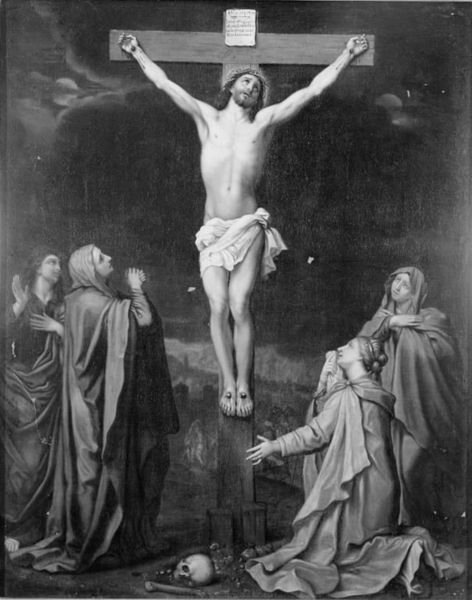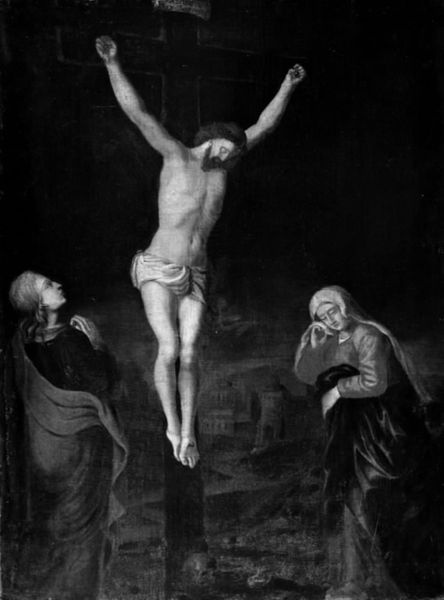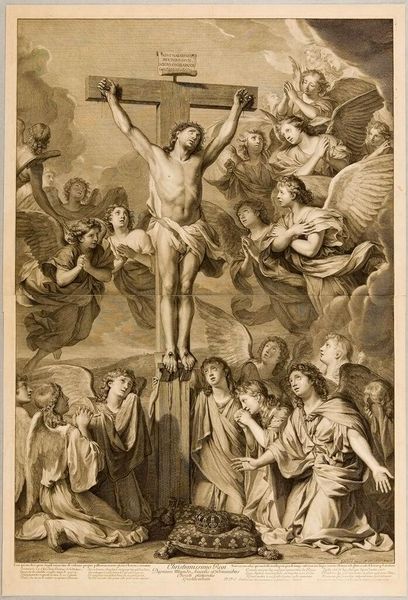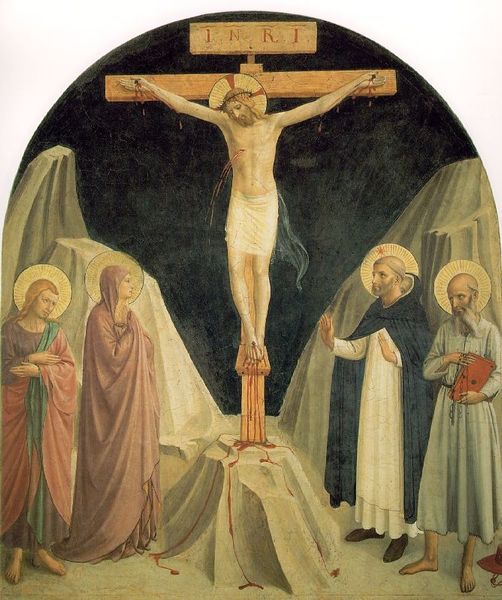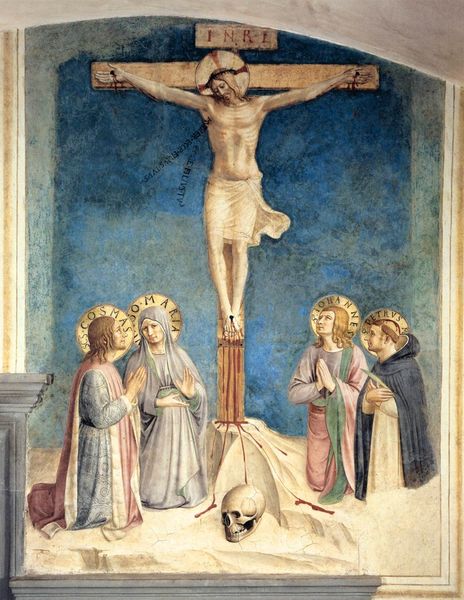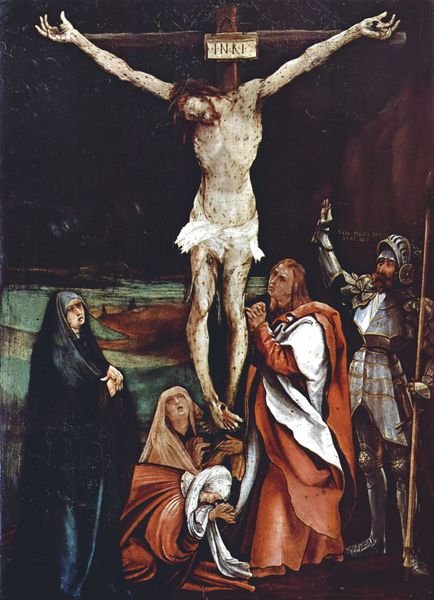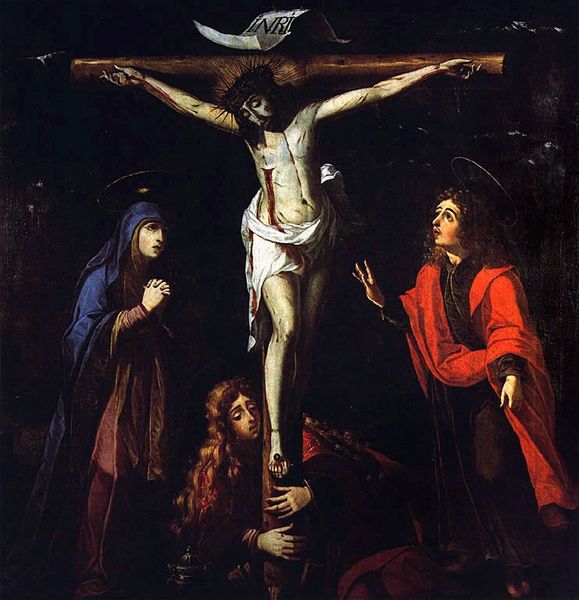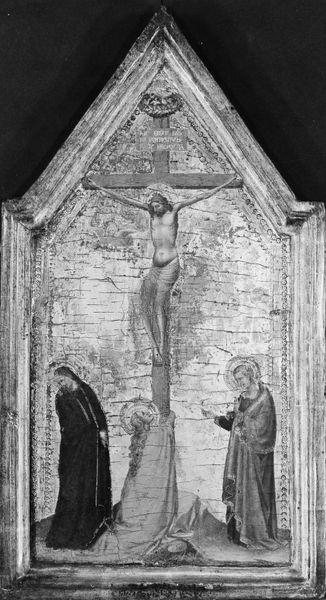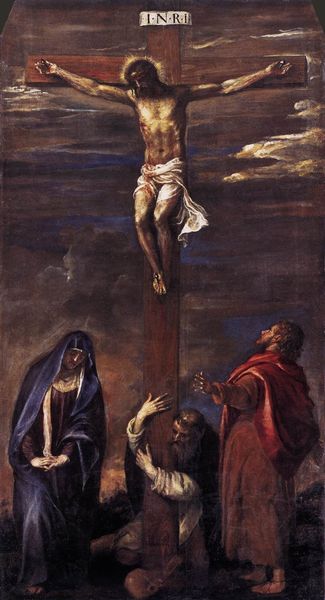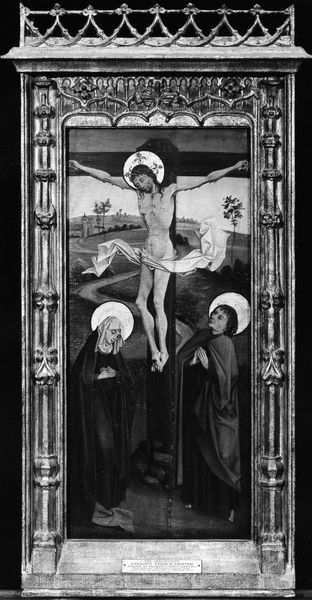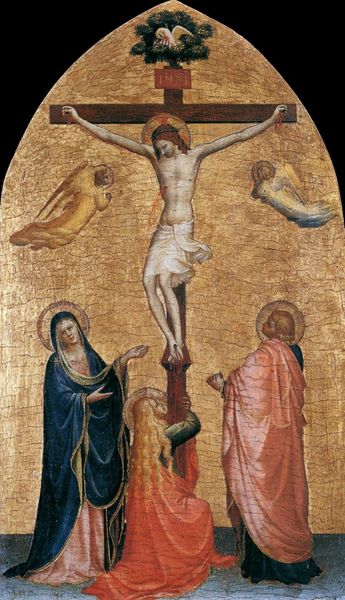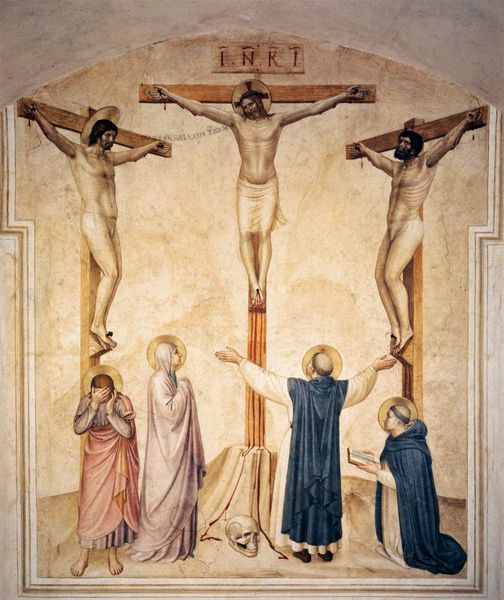
painting, gouache, paper
#
narrative-art
#
painting
#
gouache
#
landscape
#
figuration
#
paper
#
history-painting
#
academic-art
#
charcoal
Dimensions: 340 mm (height) x 260 mm (width) (bladmaal)
Editor: Here we have "Kristus på korset" or "Christ on the Cross" by W.A. Müller, made sometime between 1748 and 1794 using gouache on paper. The first thing that strikes me is the subdued palette. It makes the scene feel somber and introspective. What catches your eye? Curator: I notice the careful layering of gouache to achieve subtle tonal variations, simulating depth on paper. The artist's labor is evident in the meticulously rendered figures. Consider the accessibility of paper versus canvas at the time; how might the choice of such common materials influence who the artwork was made for? Editor: That's an interesting point! Was using gouache on paper somehow more… democratic? Curator: Possibly. Think about the networks of production involved: paper mills, pigment suppliers, the artist’s own training and economic situation. Müller's artistic practice depended on various factors to create what we could argue as devotional imagery using widely available and commercial resources. How does recognizing these economic factors change the viewing experience? Editor: It moves it away from the purely religious and towards a greater understanding of the cultural and economic circumstances that facilitated its creation. It makes you consider the artwork as an object of material exchange. Curator: Precisely! The art is more than an inspirational image. By understanding the materiality and methods, we view art as inextricably tied to society. Editor: That's fascinating! I never thought about a crucifixion scene in such material terms. Curator: Understanding production reframes even the most iconic of images. Seeing an artwork rooted in its world opens doors to understanding its significance in a richer, more textured manner.
Comments
No comments
Be the first to comment and join the conversation on the ultimate creative platform.
